January 15, 2023
Birds frenzy at the fountain and feeders this gusty, bruised-sky morning as another Pacific cold front shoulders in, carrying the promise of rain and snow to add to the year’s already impressive 1.59 inches of moisture. Clouds of tawny pine siskins descend in waves, scores of the nomadic and energetic finches mingling with the lesser goldfinches and even the occasional and rare American and Lawrence’s goldfinches among a dozen, lingering Cassin’s finches. It’s finches galore, and my efforts to count them fall short somewhere in the 60s. I’ve never seen so many in the yard all at one time, especially this “irruption” of siskins hailing from the boreal forests of Canada and Alaska.
Wrapped in a blanket, I watch these champions of the cold flit between the fountain and thistle feeder. When nighttime temperatures plunge into negative numbers, pine siskins can fire up their metabolism five times greater than other songbirds their size. To fuel this metabolism, they stuff their crops with seeds equaling ten percent of their body weight.
When I get cold, I eat a sandwich. But not one weighing 17 pounds.
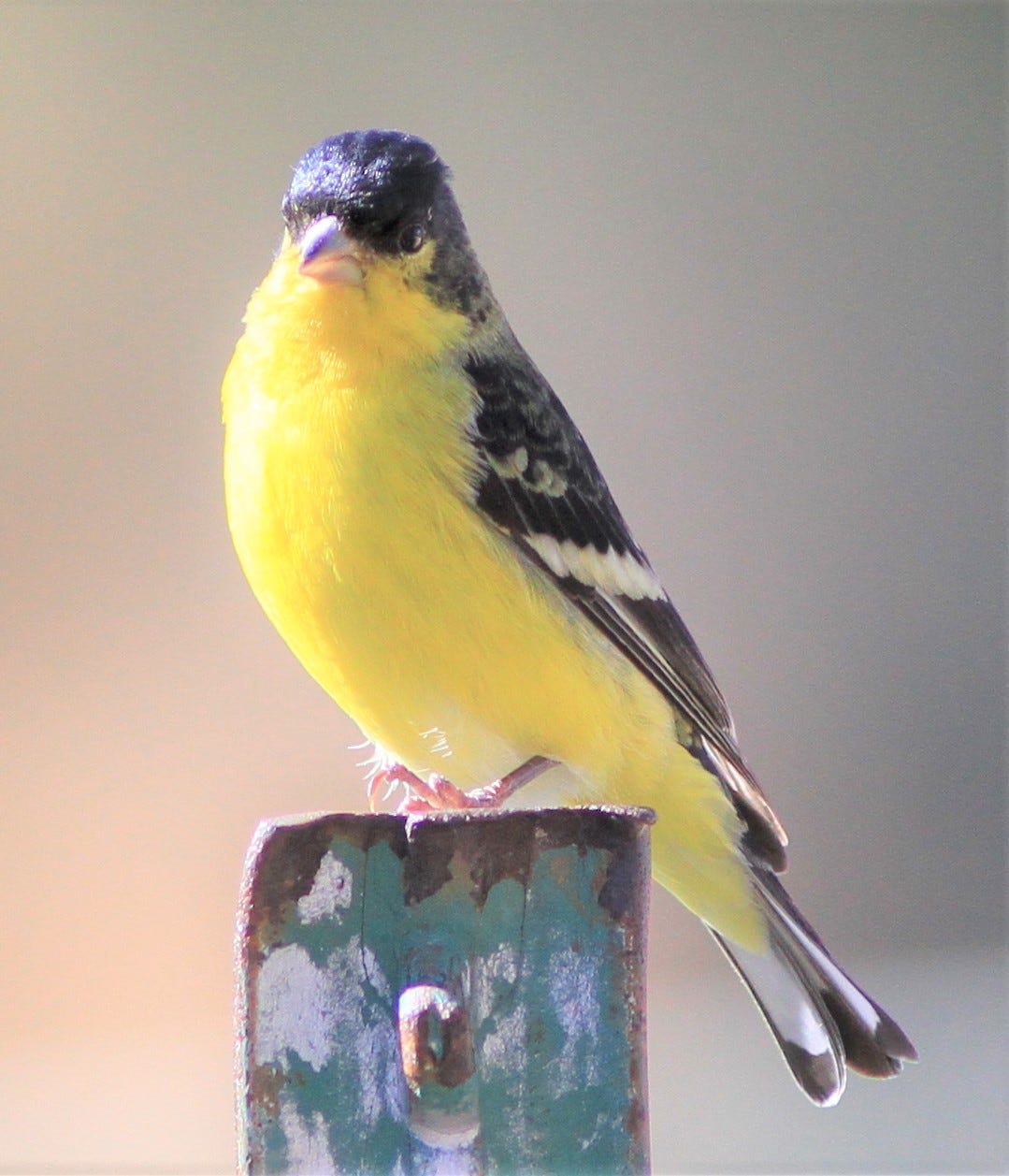
The real masters of metabolism are the hummingbirds. This morning, like most mornings this time of year, three Anna’s chase each other around the feeders, which I keep filled with a higher concentration of sugar water for them all winter. Flapping 40 to 50 times each second, their wings make a distinct sound that draws my attention (a sound distinct even among other hummingbirds). The sound of hovering flight. No other kind of locomotion among animals consumes more energy.
To accomplish this, hummingbirds quickly process sugar—fructose as efficiently as glucose (unlike humans). Recently, the journal Science published a study about researchers in Germany who, by screening bird genomes, discovered that the absence of a certain enzyme in flight muscles leads to better sugar metabolism. Michael Hiller, the study’s lead author, says that the loss of this gene in the hummingbird ancestor was likely a key step in the evolution of hovering flight 48 to 30 million years ago.
The research illustrates how, with evolution, loss can be gain.
Something I point out to the wife in defense of my shrinking Y chromosome and the probable extinction of the male species.
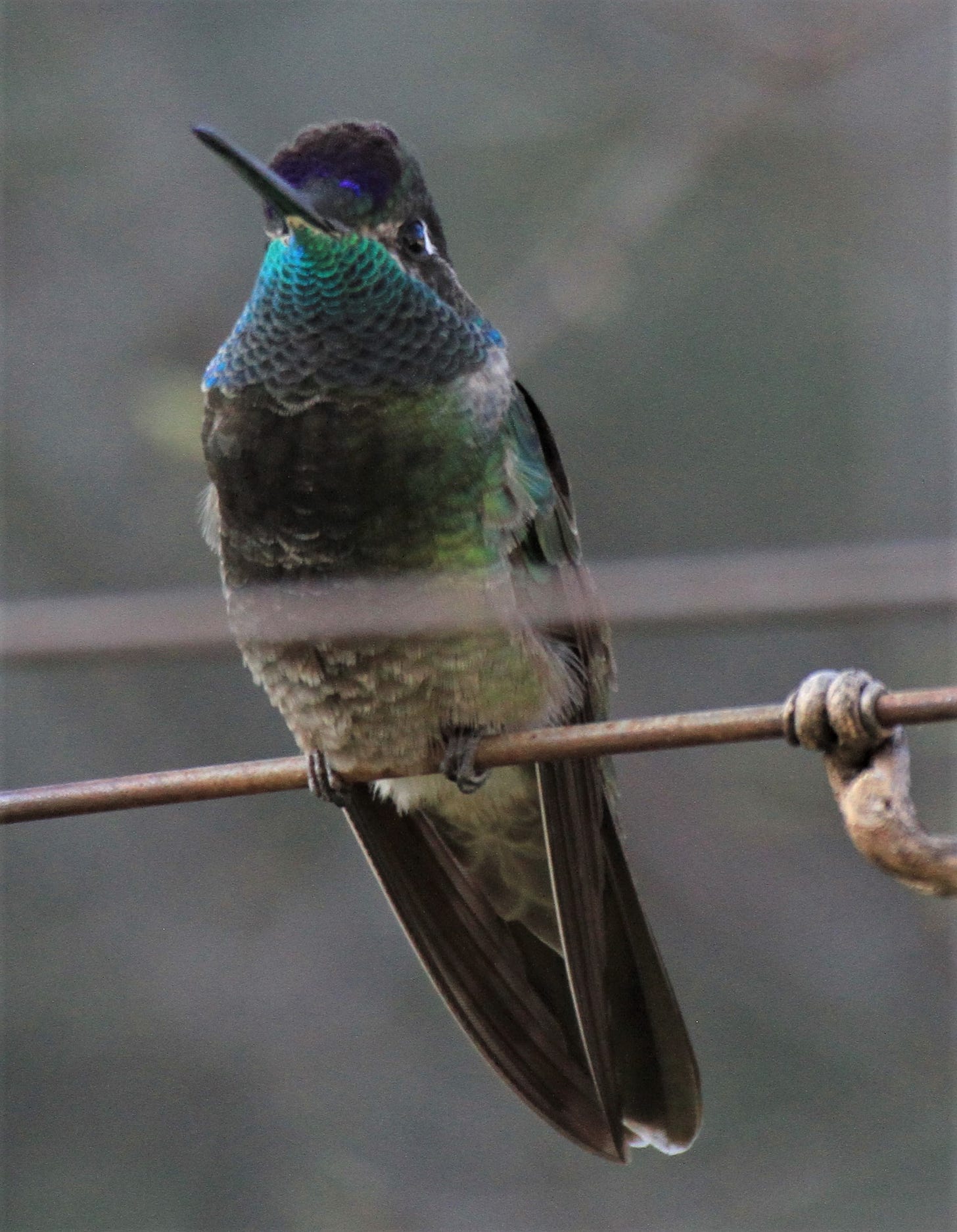
Thanks for subscribing! More birds on the way!



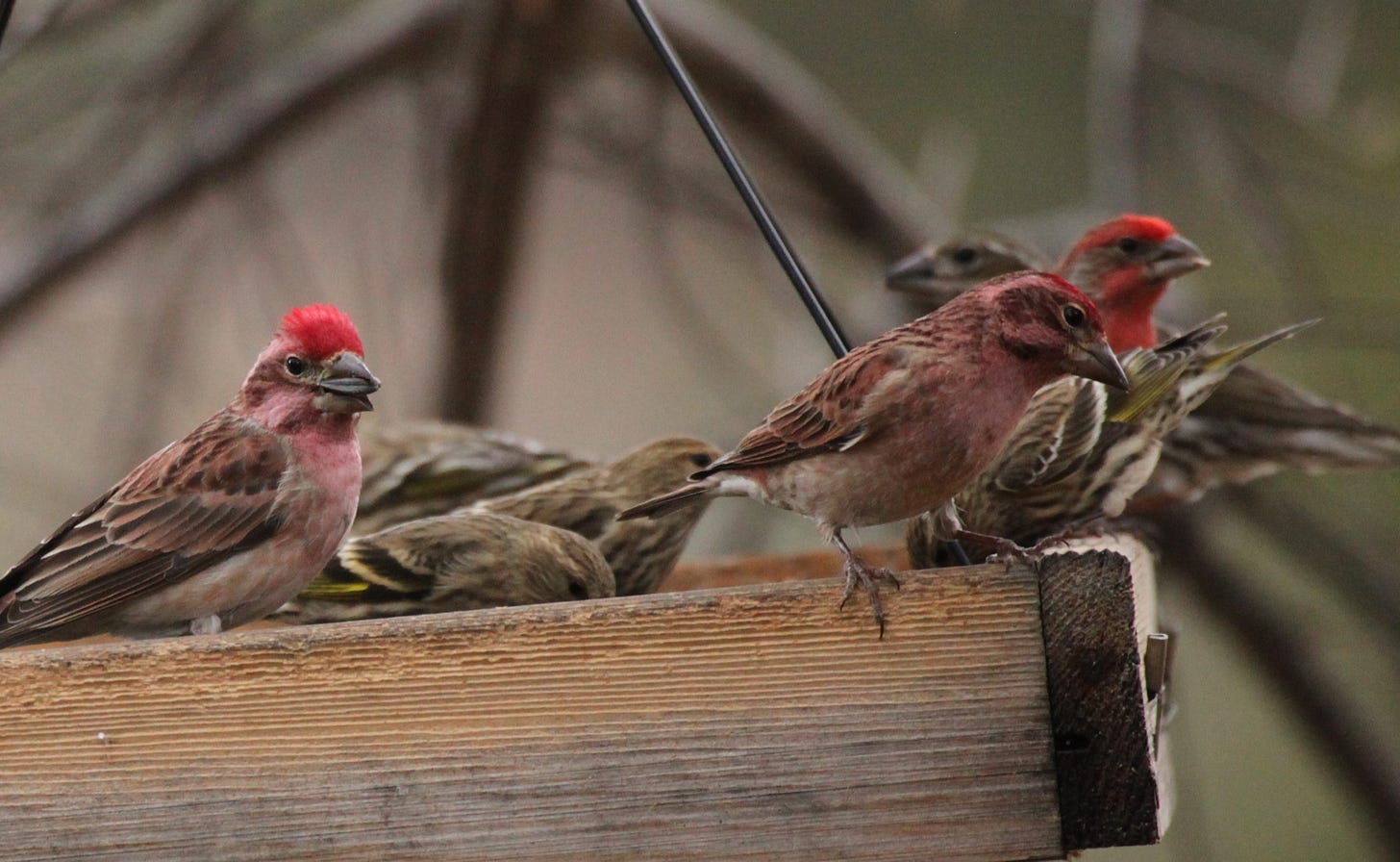
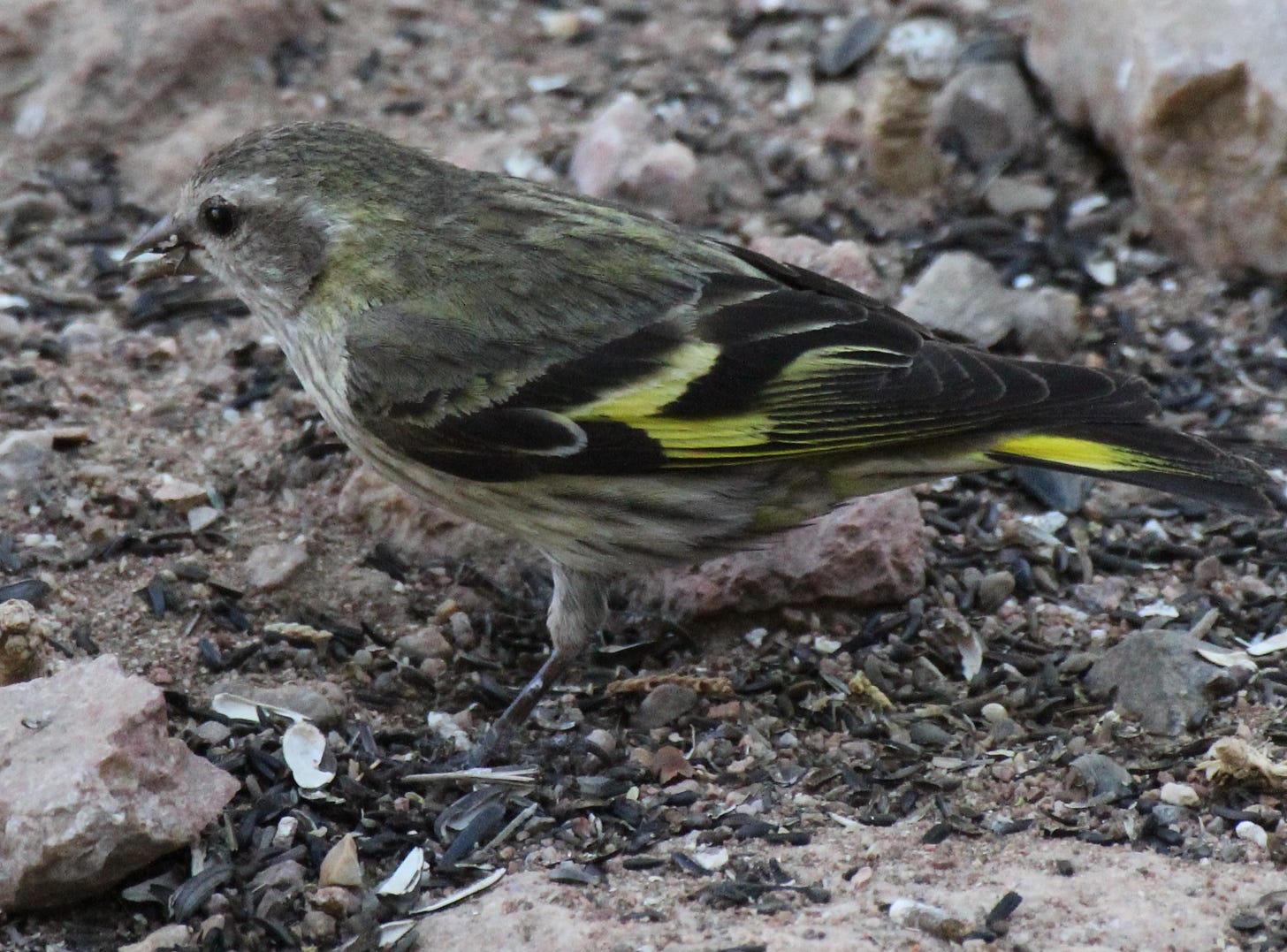
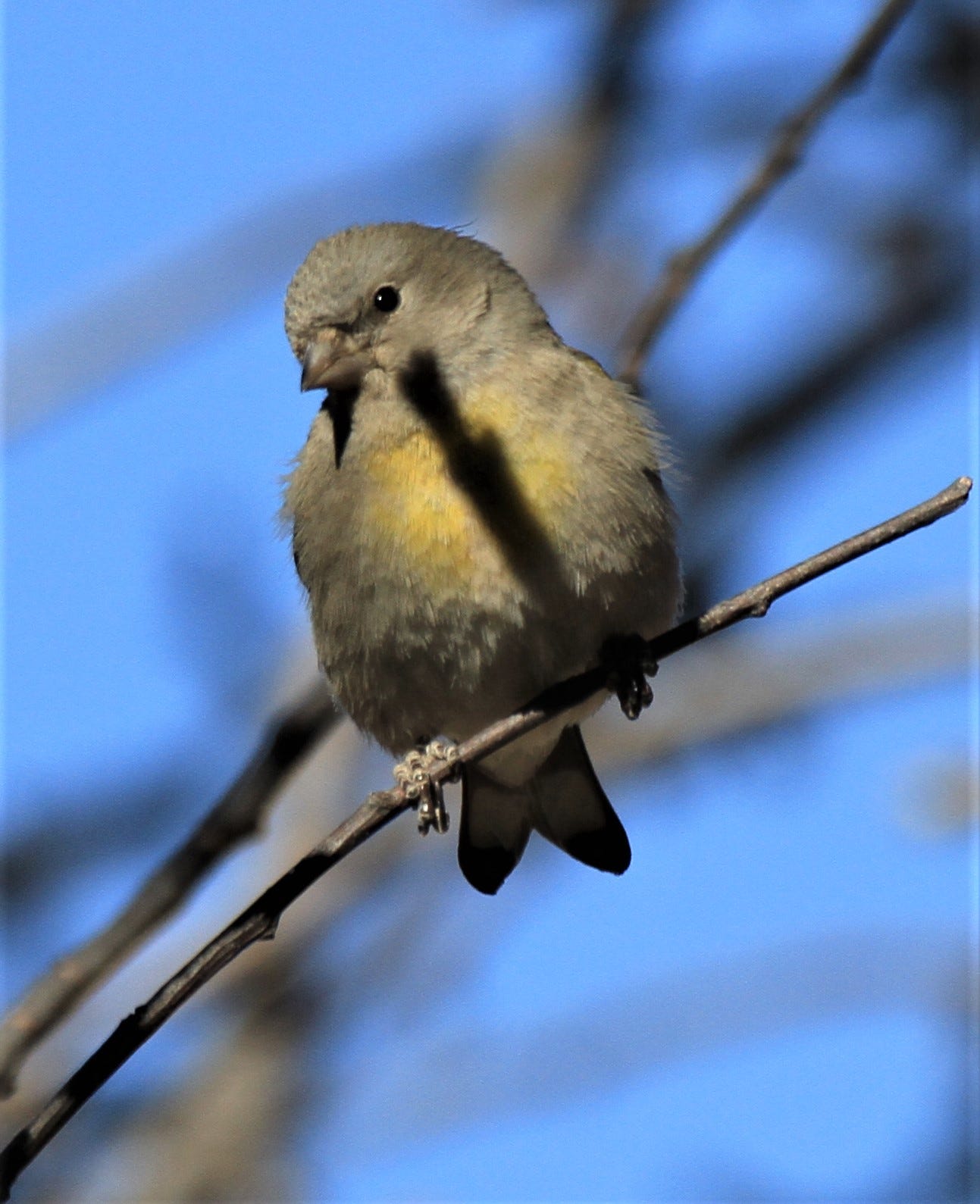

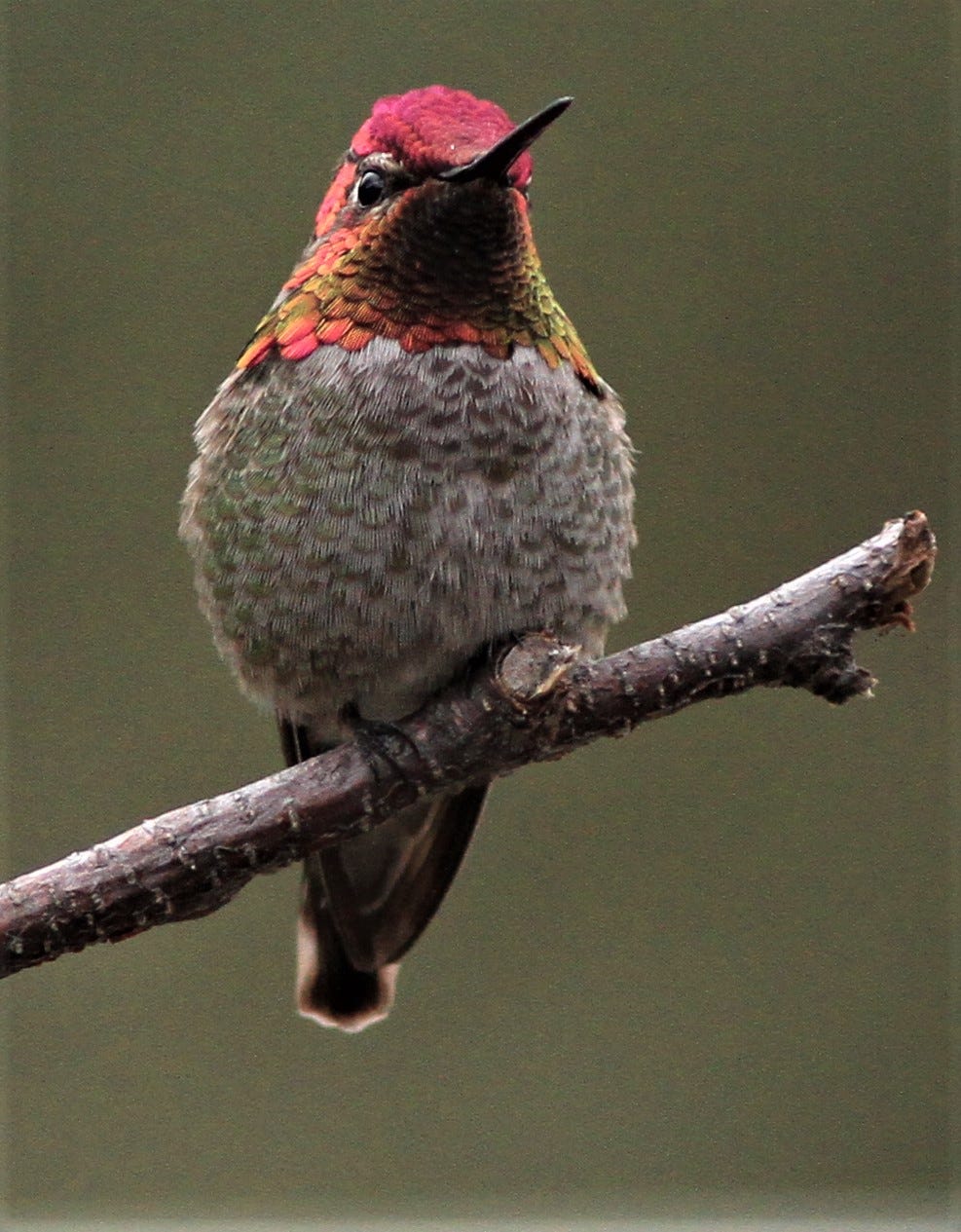
I have my earliest Costa's ever. A male. Showed up on 1/14 and is still here on this snowy morning. Do you have Lawrence's? They are no-shows this year for us as well as Cassin's Finches.
I don’t think I’ve heard anybody talking about pine siskins around here this year. And I’m still blown away by the fact that hummingbirds can be in winter weather. Somehow in my head, they were only summer weather birds that went to South America when it got cold.